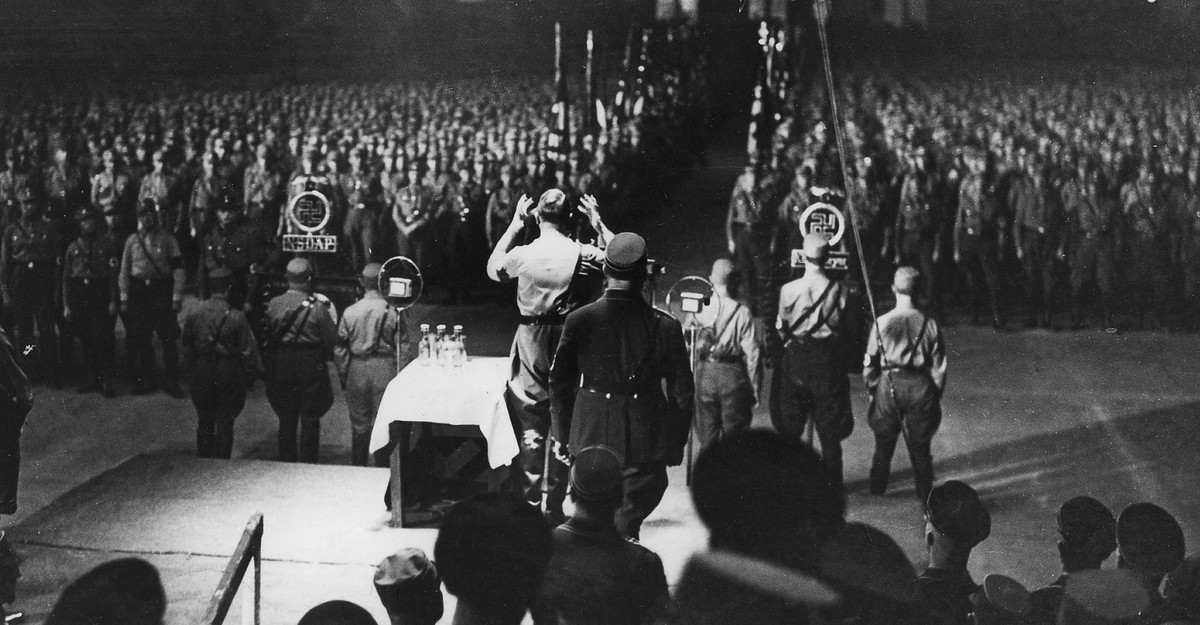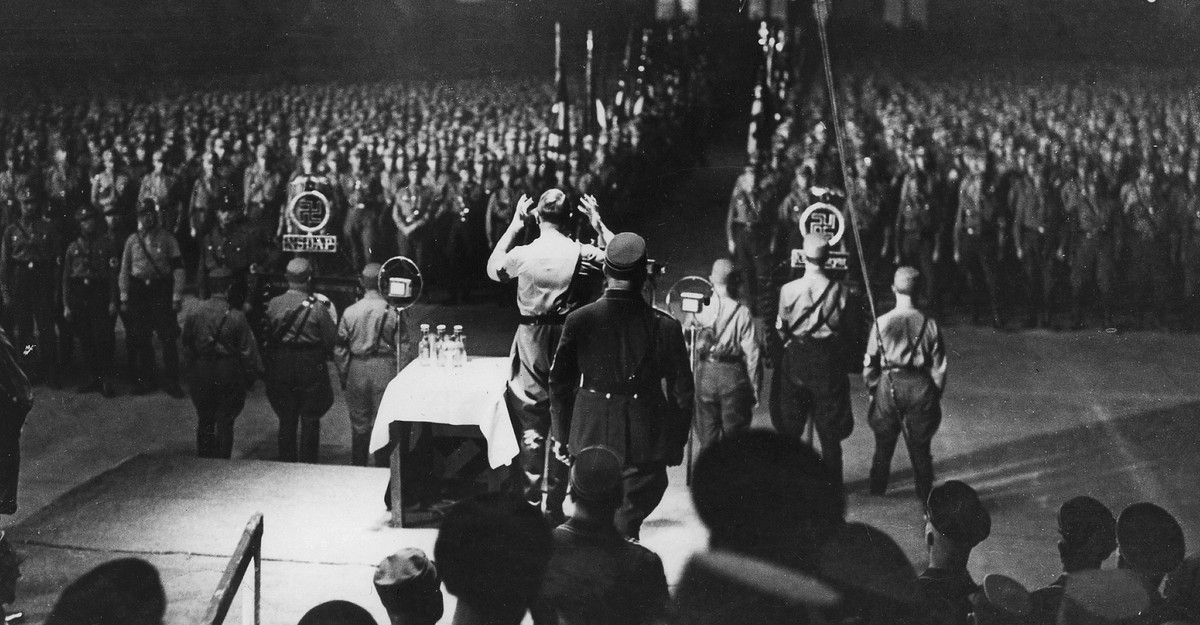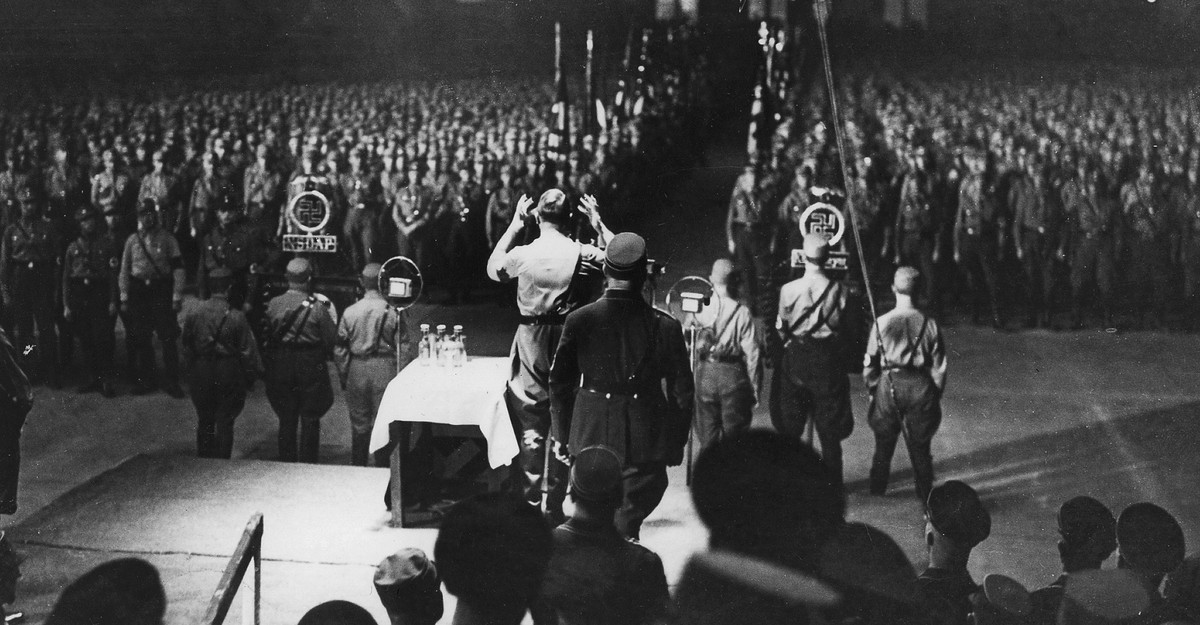Hitler’s Terrible Tariffs
Hitler’s Terrible Tariffs

Hitler’s Terrible Tariffs

From almost the moment Adolf Hitler took office as chancellor of Germany, tariffs were at the top of his government’s economic agenda. The agricultural sector’s demands for higher tariffs “must be met,” Hitler’s economic minister, Alfred Hugenberg, declared on Wednesday, February 1, 1933, just over 48 hours into Hitler’s chancellorship, “while at the same time preventing harm to industry.” Foreign Minister Konstantin von Neurath was concerned about lumber imports from Austria and a 200-million-Reichsmark trade deal with Russia. With several trade agreements about to expire, Hitler’s finance minister, Count Johann Ludwig Graf Schwerin von Krosigk, insisted that “immediate decisions” needed to be made. Hitler told his cabinet he had only one priority—to avoid “unacceptable unrest” in advance of the March 5 Reichstag elections, which he saw as key to his hold on power.
Hitler had what one might call a diffident, occasionally felonious disregard for financial matters. He owed 400,000 reichsmarks in back taxes. His understanding of economics was primitive. “You have inflation only if you want it,” Hitler once said. “Inflation is a lack of discipline. I will see to it that prices remain stable. I have my S.A. for that.” (The S.A., or Brownshirts, were the original paramilitary organization associated with the Nazi Party.) Hitler held Jews responsible for most of Germany’s financial woes.
Hitler relied on Gottfried Feder, the National Socialist Party’s long-serving chief economist, to develop the specifics of an economic program. Feder had helped concoct the strange brew of socialism and fanatical nationalism in the original 25-point program of this putative “workers’ party.” In May 1932, Feder outlined what would become the first Nazi economic plan a 32-page position paper designed for ready implementation were Hitler to suddenly find himself in power. High on Feder’s agenda for a Hitler economy were tariffs.
“National Socialism demands that the needs of German workers no longer be supplied by Soviet slaves, Chinese coolies, and Negroes,” Feder wrote. Germany needed German workers and farmers producing German goods for German consumers. Feder saw “import restrictions” as key to returning the German economy to the Germans. “National Socialism opposes the liberal world economy, as well as the Marxist world economy,” Feder wrote. Our fellow Germans must “be protected from foreign competition.”
Even though Hitler’s own foreign minister, Konstantin von Neurath, was concerned that the strategy would spark a trade war, and could drive up the price of imported eggs by 600 percent, Feder’s tariffs fit into Hitler’s larger vision for “liberating” the German people from the shackles of a globalized world order.
The crash of 1929 had plunged Germany, along with much of the rest of the world, into an abyss. Markets collapsed. Factories were idled. Unemployment soared. In the early 1930s, one out of three German workers was unemployed. But Hitler had inherited a recovering economy: In December 1932, the German Institute for Economic Research reported that the crisis had been “significantly overcome”; by the time Hitler was appointed chancellor, in January 1933, the economy was on the mend.
Thus Hitler’s main economic task as chancellor was not to mess things up. The German stock market had rallied on news of his coming to power. “The Boerse recovered today from its weakness when it learned of Adolf Hitler’s appointment, an outright boom extending over the greater part of stocks,” The New York Times reported.
But rumors of potential tariffs and the abrogation of international agreements, along with Hitler’s challenges to the constitutional order, sent alarm bells clanging. The conservative Centre Party warned Hitler against “unconstitutional, economically harmful, socially reactionary and currency endangering experiments.” Eduard Hamm, a former economics minister who served on the board of the German Industry and Trade Association, dispatched a stern letter to the new chancellor instructing him on the “legal, economic and psychological prerequisites for building capital.” The free-market system, Hamm reminded Hitler, was based on trust, the rule of law, and adherence to contractual obligations.
Hamm went on to explain that even though Germany imported more agricultural products than it exported to its European neighbors, these countries provided markets for German industrial production. (At the time, Germany imported on average 1.5 billion reichsmarks annually in agricultural products, while exporting an average 5.5 billion reichsmarks in industrial and manufactured goods.) “The maintenance of export relations to these countries is a mandatory requirement,” Hamm wrote. If one were to “strangle” trade through tariffs, it would endanger German industrial production—which, in turn, would inflict severe self-harm on the German economy, and lead to increased unemployment. “Exporting German goods provides three million workers with jobs,” Hamm wrote. The last thing Germany’s recovering but still-fragile economy needed was a trade war. Hamm urged Hitler to exercise “greatest caution” in his tariff policies.
Gottfried Feder, the economic architect of Hitler’s tariff regime, said that “the needs of German workers could no longer be supplied by Soviet slaves, Chinese coolies, and Negroes.” (Heinrich Hoffmann / Ullstein Bild / Getty)
But Hitler made no effort to reassure the markets, insisting that the tariffs were necessary and that he needed time to fix the ruined country his predecessors had left him. “Within four years the German farmer must be saved from destitution,” Hitler said in his first national radio address as chancellor. “Within four years unemployment must be completely overcome.” Hitler provided scant details as to how this was to be accomplished. By this point, he had broken even with the tariff cheerleader Feder, and had abandoned most of the action items for developing a nationalist and socialist economy. These items had included increased taxation of the wealthy; state supervision of large corporations; and the prohibition of “new department stores, low-priced shops, and chain stores.”
As chancellor, Hitler left his own plans for the German economy intentionally vague. His chief priority, as he told his ministers, was to secure an outright majority in the March 5 Reichstag elections. Hitler calculated that he needed between 18 million and 19 million votes. “There is no economic program that could meet with the approval of such a large mass of voters,” Hitler told party leaders.
But although the average voter may not have cared about the details of the Hitler economy, the markets did. The initial surge in stocks that greeted Hitler’s appointment halted then dipped and flattened amid the political and economic uncertainty of Hitler’s chaotic first weeks as chancellor. The German Industry and Trade Association issued a public warning on tariffs. “Germany has the largest export surplus of all major trading countries,” the association reported. “This situation calls for double caution in trade policy measures that could lead to countermeasures.”
Hans Joachim von Rohr, who worked at the Reich’s nutrition ministry, went on national radio to explain the logic of Hitler’s tariff strategy. “The products that Germany lacks must be made more expensive; then farmers will produce them in sufficient quantities,” Rohr explained. “And if foreign competition is kept at bay by tariffs and the like, city residents will prefer domestic production.” Rohr offered lard—“Schmalz”—as an example.
If Germany raised the import duty on Schmalz, a staple of the German diet, the German farmer would be motivated by the price increase to raise “three-ton pigs,” the main source of lard, instead of the more common “two-ton pigs,” the major source of bacon. The problem, as one critic observed, was that bacon was more lucrative than lard, even as “lard pigs” consumed more feed than “bacon pigs.” Switching from bacon pigs to lard pigs, this critic calculated, would ultimately drive the pig farmer into bankruptcy. He noted further that the international trading system had been in place for 200 years and proved itself beneficial to all parties. Hitler’s proposed “national economy,” with its self-defeating tariff policies, would plunge the country into a “severe crisis” that could cost hundreds of thousands of jobs. And that was even before any damage wreaked by retaliatory tariffs.
The Hitler tariffs, announced on Friday, February 10, 1933, stunned observers. “The dimension of the tariff increases have in fact exceeded all expectations,” the Vossische Zeitung wrote disapprovingly, proclaiming the moment a “fork in the road” for the German economy. It appeared that Europe’s largest and most industrialized nation would suddenly be returning “to the furrow and the plow.” The New York Times saw this for what it was: “a trade war” against its European neighbors.
The primary targets of the Hitler tariffs—the Scandinavian countries and the Netherlands—were outraged by the sudden suspension of favored-nation trading status on virtually all agricultural products, as well as on textiles, with tariffs in some cases rising 500 percent. With its livestock essentially banished from the German market, Denmark, for example, was facing substantial losses. Farmers panicked. The Danes and Swedes threatened “retaliatory measures,” as did the Dutch, who warned the Germans that the countermeasures would be felt as “palpable blows” to German industrial exports. That proved to be true.
“Our exports have shrunk significantly,” Foreign Minister Neurath informed Hitler in one cabinet meeting, “and our relations to our neighboring countries are threatening to deteriorate.” Neurath noted that informal contacts with Dutch interlocutors had been “bruskly broken off.” Trade relations with Sweden and Denmark were similarly strained, as were those with France and Yugoslavia. Finance Minister Krosigk anticipated that the agricultural sector would require an additional 100 million reichsmarks in deficit spending.
Hitler launched his trade war on the second Friday of his chancellorship. That evening, he appeared in the Berlin Sportpalast, the city’s largest venue, for a rally in front of thousands of jubilant followers. It was his first public appearance as chancellor, and it served as a victory lap. Hitler dispensed with the dark suit he wore in cabinet meetings in favor of his brown storm-trooper uniform with a bright-red swastika armband.
In his address, Hitler declared that the entire country needed to be rebuilt after years of mismanagement by previous governments. He spoke of the “sheer madness” of international obligations imposed by the Treaty of Versailles, of the need to restore “life, liberty, and happiness” to the German people, of the need for “cleansing” the bureaucracy, public life, culture, the population, “every aspect of our life.” His tariff regime, he implied, would help restore the pride and honor of German self-reliance.
“Never believe in help from abroad, never on help from outside our own nation, our own people,” Hitler said. “The future of the German people is to be found in our own selves.”
Hitler did not refer specifically to the trade war he had launched that afternoon, just as he did not mention the rearmament plans he had discussed with his cabinet the previous day. “Billions of reichsmarks are needed for rearmament,” Hitler had told his ministers in that meeting. “The future of Germany depends solely and exclusively on the rebuilding of the army.” Hitler’s trade war with his neighbors would prove to be but a prelude to his shooting war with the world.
